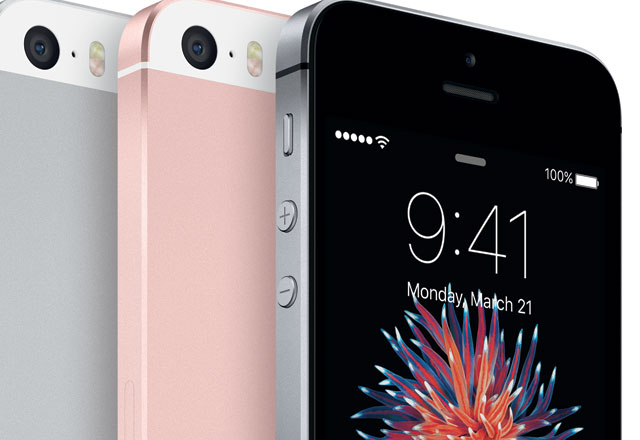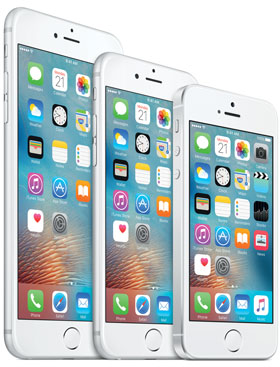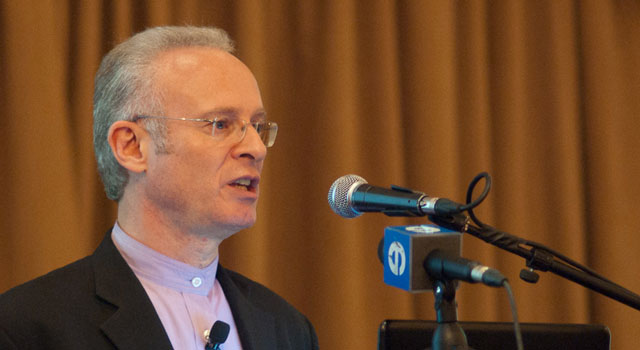
The launch this week of a smaller iPhone and a new iPad “underlines the extent to which Apple has lost the innovative edge”, according to a senior technology analyst.
The new 4-inch iPhone SE, in particular, showed that Apple had lost the innovative edge that it had when Steve Jobs was still at the helm, said World Wide Worx MD Arthur Goldstuck.
The SE, unveiled in Cupertino, California, by Jobs’s successor, Tim Cook, and his lieutenants, reintroduces the smaller form factor made popular in earlier iPhones.
But the move runs counter to the industry trend towards bigger screen devices. Although the SE packs in the power of current-generation iPhones, the device is housed in a shell borrowed from the older 5s design. And most analysts and commentators have reacted with, at best, lukewarm enthusiasm.
Analysts are predicting about 15m annual shipments of Apple’s new handset. In its 2015 full year, the company sold 231m iPhones, but analysts are pencilling in a decline this year. “From a value proposition standpoint, we think [the SE] will find its niche,” Bill Kreher, a technology analyst at Edward Jones & Co told Bloomberg. “At the same time, it’s important to know that Apple’s iPhone 7 update in September will be more critical.”

Since reaching a record high in February last year, Apple’s share price has fallen by almost 20%, compared to the Nasdaq 3,6% decline over the same period.
Goldstuck said that in the longer term, the decline in the pace of innovation at Apple since Jobs’s death will harm the company.
“They still enjoy the adulation of their users, and they still have a design edge over everyone else, so you’re not going to see their sales suffer significantly immediately. But in the longer term, it’s going to be a problem.”
Jobs was a “case study” of how a CEO can drive innovation, said Goldstuck. “What we are seeing in the post-Jobs Apple is the real scope of the impact he had. This is highlighted by his absence.”
And the launch of the iPhone SE underscored this, he said. “There’s nothing ground-breaking, yet Apple’s vice-president of worldwide marketing, Philip Schiller, called the phone an ‘exciting new idea’. It’s concerning that they should refer to a rehashed phone as an exciting new idea,” said Goldstuck.
“There’s nothing exciting about it, and there’s nothing new about it. The shell is the iPhone 5s, and the insides are the iPhone 6. The SE is, in fact, a lesser product.”
Also, Goldstuck believes the market for a 4-inch smartphone is dwindling, even at the “cheaper” price of US$400 at which the SE will be sold (it is likely to cost north of R7 500 in South Africa). Consumers, even those buying cheaper devices, want bigger displays.
“Something that Samsung has understood for a few years now is that people are moving away from using smartphones as a voice device and are using them mainly for media consumption,” Goldstuck said. “That’s why Samsung had such a success with the Galaxy Note, for example.”
They will eventually be found out by the market
The iPhone SE should have been launched with other iPhones, not as a product by itself, he added. This did not mean Apple was badly run under Cook. “Apple is incredibly well run,” said Goldstuck. “The fact that they maintain those margins is testament to that. The question is how innovative the company is, and that’s a different story.”

Apple would not be able to maintain the leadership it had in certain markets if it failed to innovate and allowed other manufacturers to dictate the course of innovation. “They will eventually be found out by the market,” said Goldstuck.
Perhaps Apple’s biggest challenge is finding a new category to invent, or to reinvent. The Apple Watch, which some had hoped would be the next big thing for the company, hasn’t captured the imagination of consumers in the way the iPhone and iPad did.
“The watch is certainly not the blockbuster Apple was hoping it would be, despite it dominating the smartwatch market,” said Goldstuck. “It hasn’t transformed the watch industry, and that is what everyone had been hoping for. In that sense, it’s been a letdown.”
Craig Wilson, editor of Stuff magazine, is a little less critical. He believes it has become harder for all players in the industry to shoot the lights out with new product launches.
“This week’s keynote was more about iteration that innovation. But the same also holds true for [launches from] Samsung and others. It’s a problem for everyone, but a lot of the criticism gets levelled at Apple.”
- This piece was first published in the Sunday Times




